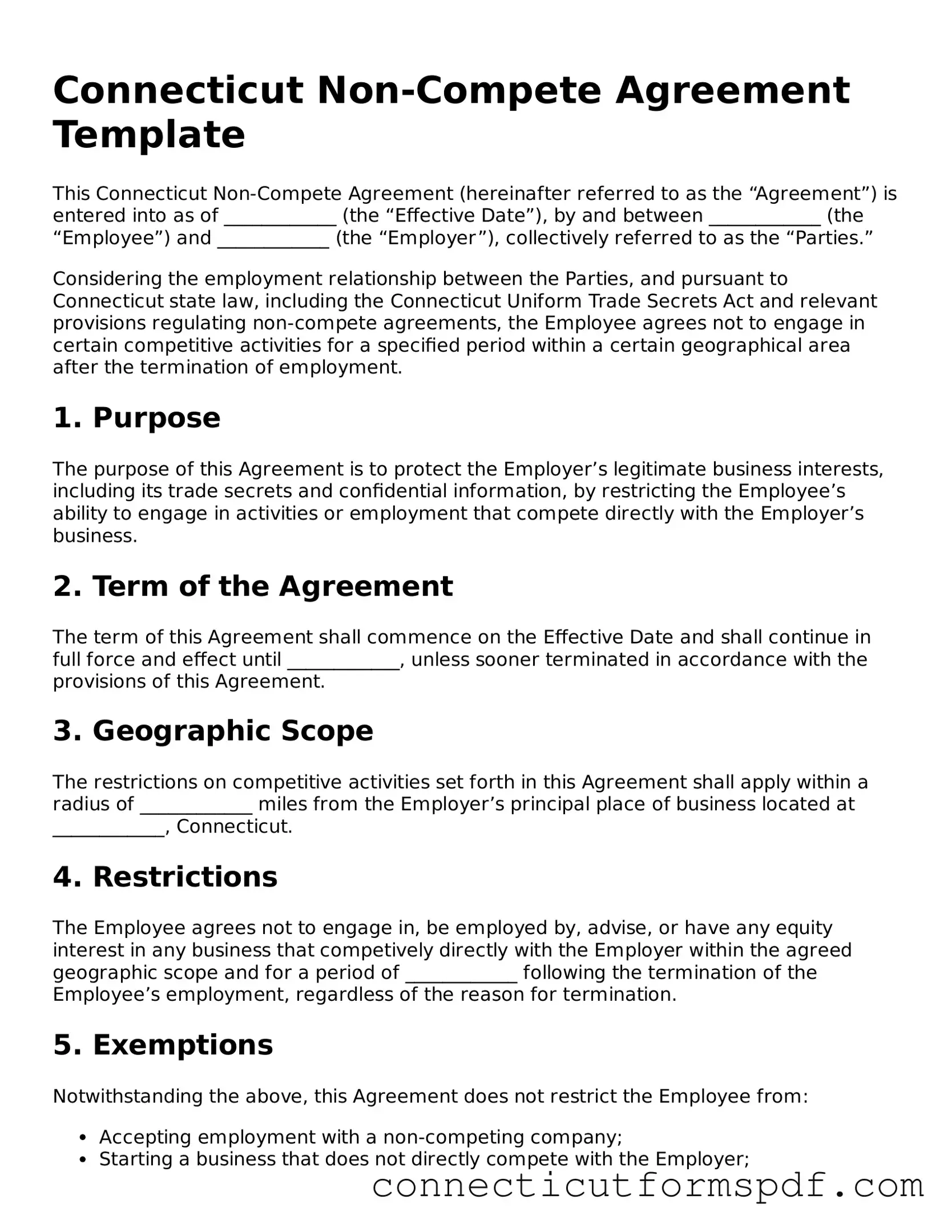Connecticut Non-Compete Agreement Template
This Connecticut Non-Compete Agreement (hereinafter referred to as the “Agreement”) is entered into as of ____________ (the “Effective Date”), by and between ____________ (the “Employee”) and ____________ (the “Employer”), collectively referred to as the “Parties.”
Considering the employment relationship between the Parties, and pursuant to Connecticut state law, including the Connecticut Uniform Trade Secrets Act and relevant provisions regulating non-compete agreements, the Employee agrees not to engage in certain competitive activities for a specified period within a certain geographical area after the termination of employment.
1. Purpose
The purpose of this Agreement is to protect the Employer’s legitimate business interests, including its trade secrets and confidential information, by restricting the Employee’s ability to engage in activities or employment that compete directly with the Employer’s business.
2. Term of the Agreement
The term of this Agreement shall commence on the Effective Date and shall continue in full force and effect until ____________, unless sooner terminated in accordance with the provisions of this Agreement.
3. Geographic Scope
The restrictions on competitive activities set forth in this Agreement shall apply within a radius of ____________ miles from the Employer’s principal place of business located at ____________, Connecticut.
4. Restrictions
The Employee agrees not to engage in, be employed by, advise, or have any equity interest in any business that competively directly with the Employer within the agreed geographic scope and for a period of ____________ following the termination of the Employee’s employment, regardless of the reason for termination.
5. Exemptions
Notwithstanding the above, this Agreement does not restrict the Employee from:
- Accepting employment with a non-competing company;
- Starting a business that does not directly compete with the Employer;
- Engaging in any competitive activity with the written consent of the Employer.
6. Severability
If any provision of this Agreement is held to be invalid or unenforceable under the law, such provision will be modified to the minimum extent necessary to make it valid and enforceable, or if it cannot be modified, it will be severed from this Agreement, and the remaining provisions will remain in full force and effect.
7. Governing Law
This Agreement shall be governed by and construed in accordance with the laws of the State of Connecticut, without giving effect to any choice or conflict of law provision or rule.
8. Entire Agreement
This Agreement constitutes the entire agreement between the Parties with respect to the subject matter herein and supersedes all prior or contemporaneous agreements, whether written or oral.
Signature
IN WITNESS WHEREOF, the Parties have executed this Connecticut Non-Compete Agreement as of the Effective Date first above written.
Employee Signature: ____________
Employer Signature: ____________
